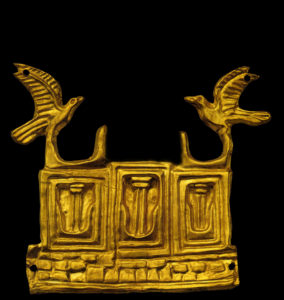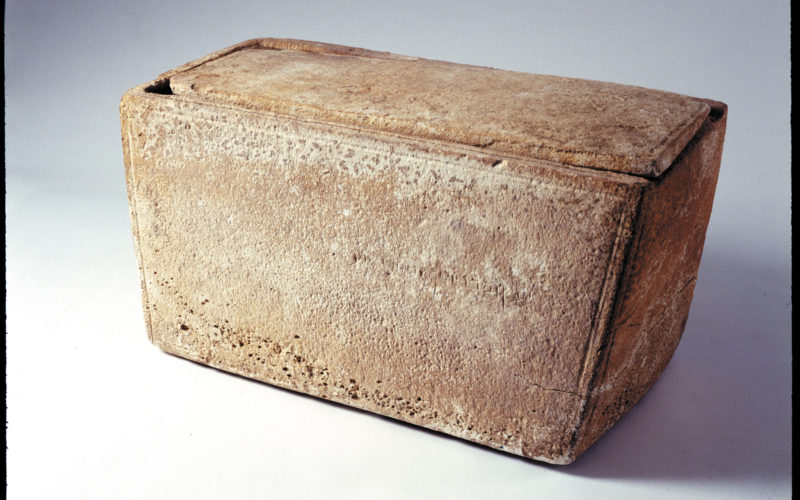A Story that Would Scare Indiana Jones!
![James Ossuary 1[1]](http://www.simchajtv.com/wp-content/uploads/2013/10/James-Ossuary-11-300x243.jpg)
What this means is that the famous/infamous ossuary (bone box) with the inscription “James, son of Joseph, brother of Jesus”, along with other confiscated items from Golan’s collection, will also be returned. On a separate matter, Oded Golan lost on his appeal to have two minor charges of handling illegal West Bank artifacts overturned. The West Bank is technically not under Israeli judicial jurisdiction. Therefore, he argued, there was no “legal” way for him to purchase antiquities from West Bank dealers. In a judicial somersault, Supreme Court Judge Daphne Barak-Erez ruled that Israel is enforcing Jordanian law, and then used the ruling as a bully pulpit to rail against antiquities dealers and collectors. This may be a problem in the long run because she may succeed in making all trade in antiquities illegal in Israel. This would drive collectors and dealers underground, making less artifacts available for scholarly examination. The fact is that, unlike collectors, the State is in no position to buy artifacts. Last year, several hundred historically priceless documents were found in a cave in Afghanistan. They are presently being held in Europe by three different dealers and no one is putting out the money to purchase the collection. As a result, some of the most valuable documents in Jewish history might disappear forever into the abyss of the European antiquities market. Criminalizing antiquities collecting is wrongheaded and will not work.
For an excellent article on the rulings, see Matthew Kalman’s coverage on Bible & Interpretation. Kalman has been following the trial since the beginning and has been the most reliable reporter on the subject.
What I think is amazing about this entire scandal is the distances to which authorities will go to enforce a particular paradigm of history. The two items in question are the so called “James Ossuary” and the “Jehoash” inscription which – if authentic – would be the only inscription ever discovered that not only dates to the Temple of Solomon, but is a perfect match with a Biblical reference pertaining to the renovation of the Temple of God in Jerusalem (2 Kings 12:1-16).
As far as I’m concerned, both artifacts have been proved authentic many times over. Those academics who think it’s a forgery are not convincing and even when the entire resources of the State of Israel were brought to bear in a court of law – for over a decade – they weren’t able to convince anybody that the items are forged. I’ve made films about both artifacts and I’m convinced that they are authentic (“James, Brother of Jesus” and “The Naked Archaeologist – Real or Fake? And Fame & Forgery”). In fact, like Hershel Shanks, the editor of Biblical Archaeology Review (BAR), I’ve stuck by my story and never – ever – joined the chorus of politically correct “forgery” accusations. I was there when the James Ossuary inscription was subjected to a battery of tests in two countries and it passed every one of them. No artifact in the Israel Museum has been tested so often, and in so many ways. I was there when it passed the electron-microscope test (twice), the ultra-violet test, the epigraphy test and a whole slew of other tests. The Jehoash inscription has microscopic bits of pure gold embedded in it. This could only have happened in the fires that destroyed the Temple in 586 BCE. No forger would think of – or be capable of – embedding the gold into the stone. More than this, there were microscopic organisms that could not be modern in origin, embedded into the inscription.
Despite all this, collector Oded Golan has gone through a ten year ordeal where he was arrested, incarcerated, put under house arrest for over a year, charged, had parts of his collection confiscated and damaged, dragged through the courts and libelled on the front pages of every newspaper in the world. In Israel, Palestinian terrorists are treated far better. And, at the end of the day, what did the State prove? Nothing. In a bizarre twist, after arguing that the items were forged, the State then wanted to confiscate them as “national treasures”. And what was the purpose of all this? Well, in many respects, the State won. Imagine for a moment that you find, or are shown, an archaeological item related to the Bible. Would you touch it? Would you purchase it? Would you publicize it? Or would you run as far away as possible, fearing that you will be prosecuted and persecuted and, even if you win, you will have to dedicate hundreds of thousands of dollars and ten years of your life defending yourself from charges of forgery, opportunism, sensationalism and worse.

After the inquisition against Golan and Dr. Robert Deutsch (a collector and scholar who was found innocent on all counts), who would dare stand up to the antiquities authorities and the academic thought police? And even if you can avoid prosecution, there’s always trial by internet where a handful of underwear bloggers – sitting night and day by their computers – will dedicate thousands of hours in an attempt to destroy your reputation. I venture to say that the sad fact is that if Indiana Jones happened on a cave with the Lost Ark of the Covenant in it, he would probably roll the boulder back over the mouth of the cave, and run as far away as possible – telling no one.
Click here to see my recent article “We Won the Gold Dolphin” on The Times of Israel

